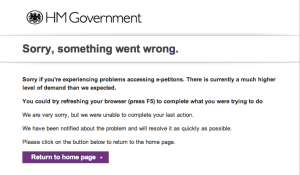For the last few months I’ve been publishing the results of Freedom of Information requests that I’ve been making to government departments to discover how many campaign actions they’ve received in the last 12 months.
Now that all* the results are in, what can we learn?
- A huge amount of campaigning is taking place. Government departments have received at least 946,000 actions in the 12 month period from 1st May 2010 and 1st May 2011. See below for why I’m saying ‘at least’.
- Actions are being generated by a vibrant civil society. Actions from 66 organisations that were named in the responses, and that excludes the 76 actions that I wasn’t able to identify an organiser for.
- E-actions lead the way but aren’t as dominant as you’d expect. Government departments reported receiving 400,458 email actions in the 12 month period, compared to 262,886 letters, 97,311 postcards and 39,107 petitions. Although the latter numbers need to be treated with some caution as my sense is that most departments didn’t make much of a distinction between letters, postcards and petitions. We don’t know the source of 147,163 actions.
A top 20? Below are the actions that generated the most responses;
[googleapps domain=”docs” dir=”spreadsheet/pub” query=”hl=en_US&hl=en_US&key=0ArsF-z0r3hFfdE96LTlqRG5VemswV2N0SlRfMUM5b3c&single=true&gid=0&output=html&widget=true” width=”500″ height=”750″ /]
But it’s also important to recognise some of the limitation of the research;
1. It doesn’t include actions to MPs – With a record intake of new MPs into Parliament many campaigning organisations are likely to have been focusing their campaigning energy on MPs. For example, 38 Degrees excellent Save our Forests campaign gathered over 500,000 actions but doesn’t appear in the results. Why? Because they targeted their actions towards MPs.
*I’m still waiting for the Ministry of Justice to come back to me. I’ve followed up on a number of occasions and will shortly be referring this to the Information Commissioner.





